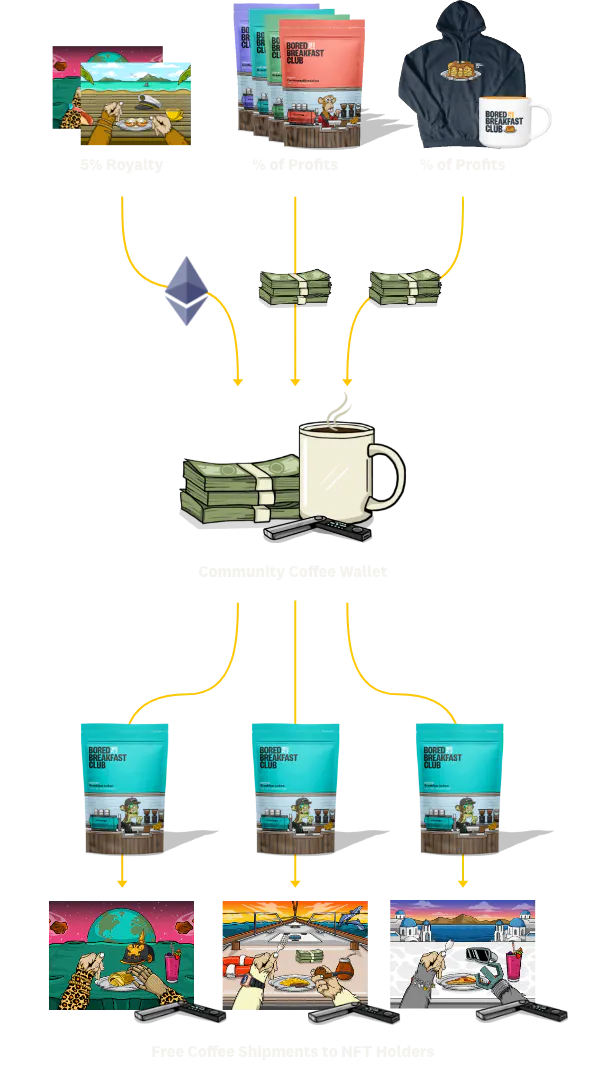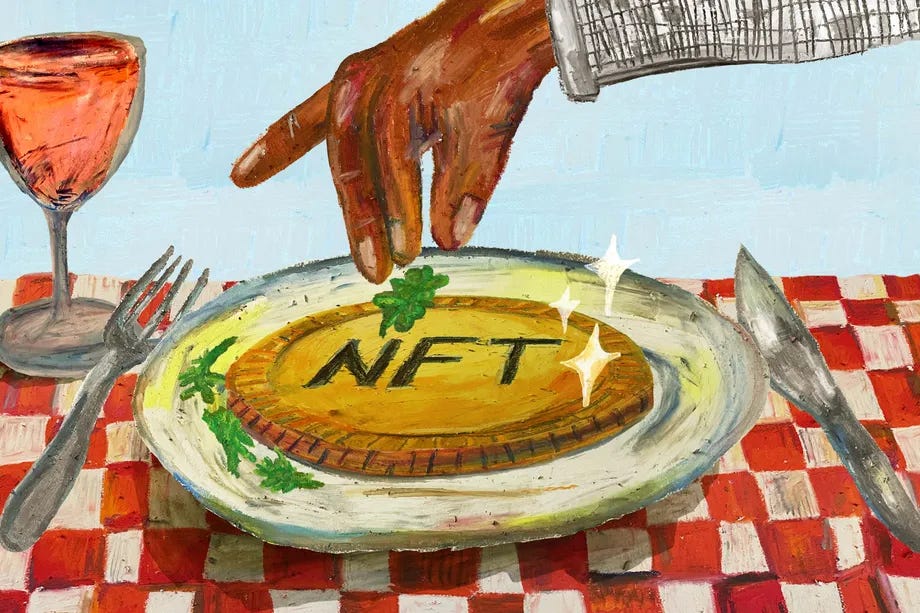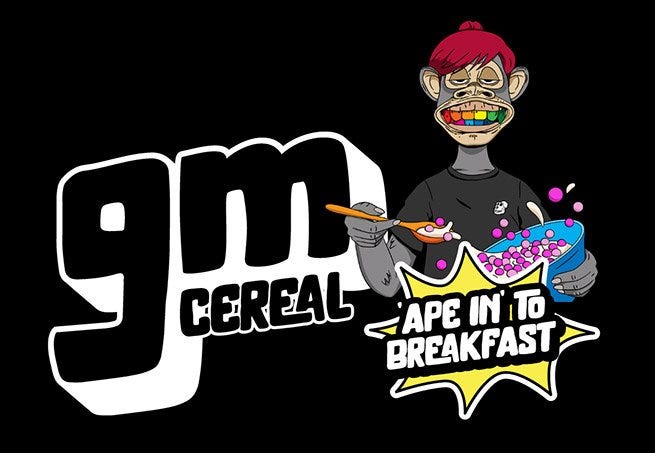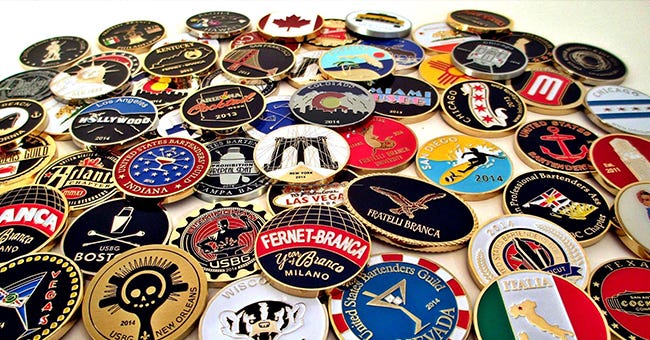WHAT CAN NFTs BRING TO YOUR F&B BRAND?
While Shanghai seems to be seeing some light at the end of the lockdown tunnel (it looks like we should be cleared by sometime in June, maybe, hopefully,…), Beijing and several other cities are going deep into it… The whole food & beverage industry is suffering and I am currently talking to three or four founders per week about how they are dying for cash for rent and salaries, suppliers’ debts, and taxes. This comes as F&B professionals are unlikely to see any substantive financial support, apart from perhaps a few weeks or months of rent, depending on the landlords.
So where do we go from here?
This newsletter showcases innovative ideas and interesting trends from China and Asia, so when good things are happening, I’ll do that.
But as requested by several FoodTech fans (in the survey here), we will provide more focused content per newsletter.
This week I will give a better sense of how NFT technology (and its surrounding buzz) is making moves in the F&B industry and how you might find a way to apply it to your business, or not!
— Greg
PS: If you have topic requests you’d like me to work on… let me know here!
Hi, I’m Greg, founder of NextStep [F&B] Studio. We help F&B brands and companies in China grow by implementing new F&B trends & innovations.
The FoodTech Confidential Newsletter is my way to share what’s happening in the Food and Beverage industry with F&B professionals, FMCG experts, Tech entrepreneurs, and Investors focusing on China and Greater Asia. Contact greg@nextstepstudio.co.
[TODAY] - EVENT ANNOUNCEMENT
Last chance to sign up for today’s event :
How do you build a successful food-tech business in APAC?
On May 17th, (today) at 6PM Asia / Singapore Time, I will be joining the line up of some amazing panelists from GourmetPro, Big Idea Ventures, FTRIC, Green Queen Media, PlantForm Partners, FHH Ventures, Michael Waitze media, and Future Food Fund (Oisix ra daichi), to reveal the playbook for building a food startup in Food APAC.
Register for this online event now and get front-row seats to the future of food in this region !
TODAY’S SPECIALS
[FOCUS] WHAT NFT COULD BRING TO YOUR F&B BRAND?
What is an NFT?
Why should you care?
What could be some use cases in F&B?
Great, now what?
A la carte :
COVID can’t seem to touch China’s beer industry
Chinese consumers love their coffee, but not all in the same way.
Now, let’s dig in!
WHAT CAN NFTs BRING TO YOUR F&B BRAND?
1 - What is an NFT?
NFT stands for “Non-Fungible Token”,. which means it is a digital token based on blockchain technology with the main characteristic of being non-copyable and non-interchangeable, which means each record is an irreplicable digital receipt that can be issued for almost anything.
Even though they have been around since 2014, it’s only in 2021 that they really became mainstream with infamous pieces of digital art such as the Bored Ape, Metaverse, and more generally what we call Web3.
What is Web3?
Web3 is currently a work-in-progress and isn’t exactly defined yet. However, the main principle is that it will be decentralized (with a Decentralized Autonomous Organisation - DAO) – rather than controlled by governments and corporations, as is the case with today’s internet – and, to some extent, connected to the concept of the “metaverse." You can find a pretty good and simplified explanation here on Forbes.com
For the creators, the original value proposition of NFTs was that they are engineered with “smart contracts,” with built-in terms and conditions. So if someone buys and then resells an NFT you made, you would receive a cut each time it changes hands.
2 - You are in F&B? Here is why you should probably care.
NFTs have become perhaps one of the most talked-about digital investments, and Google is reporting an average of seven million queries per month. When people think about NFTs, what usually comes to mind is the digital art that is minted and sold.
But brands in the food and beverage industry are shifting their focus to emphasize the community aspect that comes with Web3 and finding specific utility for the NFT token-holder.
3 - How it would look applied to F&B?
Basically, it is about building a bridge closer to a client base by giving them a sense of ownership and belonging. Here are some interesting use cases to give you a hint of what could be done using NFT or simply a good, old marketing approach that’s both non-digital and fungible. I will leave it up to you to interpret how you’d like to make good use of it.
Membership :
Flyfish Club is the world's first-ever member's only private dining club where membership is purchased on the blockchain as an NFT. Created by VCR GROUP, this membership program, unlike others, give the right to its members to do what they wish with it – enjoy it, sell it, or lease it. It is a utility-based project where token-holders receive something tangible instead of simply having digital artwork stored in their crypto wallet or displayed as an avatar on social media platforms. In addition to receiving a fish or sushi-themed NFT, token-holders also have a membership to the Flyfish Club restaurant located in New York City and access to real-life pop-up events (Super Bowl events or yacht parties in Miami). The focus is on building a community of people that love food and enjoy exclusive culinary experiences.
→ You can learn more about VCR Group’s business model behind the NFT Flyfish Club and its results so far by reading more here.
Even Starbucks recently announced they will be launching an NFT program.
Ownership :
BurgerDAO is a group of restaurateurs working through cloud-kitchen concepts to offer hamburger-themed NFTs that give everyone who participates a way to own part of this burger chain and shape its operational direction (like creating and voting on proposals impacting the brand, franchise locations, a monthly code for free burgers, and access to members-only Discord channels).

“While owning a token or NFT in the web3 world is not the same as buying stock in McDonald’s (yet), we believe it can get pretty close with this model. There are no c-suite executives or private jets or expensive offices we need to pay for. The profits from this burger chain go directly to the community of contributors in the form of the token” from BurgerDAO’s website
→ You can learn a lot more about the roll-out plan, rights, and operations here.
Similar to BurgerDAO, you will already find FriesDAO and DinnerDAO and their business principles and models are quite similar.
The GMGN Supply Co is using the DAO model to launch a CPG brand of cereals.
“Imagine if Consumer Packaged Goods (CPG) brands like Nestlé or Unilever started as Decentralized Autonomous Organizations (DAO) and you were invited to be a stakeholder from the start. We want to do it better, together and this is your invitation. Help us fulfill the ambitious vision of 100 community-built CPG brands” as described in their pitch deck here.
Collectibles :
The best example would probably be to look at what Fernet Branca Challenge coins have been doing for years. A shot of Fernet has long been one version of a bartender’s handshake and the coin, a currency of sorts within the bar community, is a real-world equivalent of what NFTs can potentially become. Industry people would go to Fernet events just so they could get the new Fernet coin.
As brands increasingly take to the digital world to increase their exposure, many beverage companies are now experimenting with NFT technology to build interest around their products. Budweiser, for instance, recently signed a deal to mint collectible tokens, as have Glenfiddich, Bacardi, Fountain Hard Seltzer, and the Robert Mondavi Winery.
Another example would be Industry Spirits which recently released a limited-edition NFT bottling of its American-made vodka and gin. It is a series of 10 bottles with custom labels, sold as NFTs and in this case, buyers own both the digital art and the physical bottle.
Subscription :
In addition to providing the token-holder with digital artwork that depicts unique breakfast scenes, The Bored Breakfast Club offers a coffee subscription.
“The founders created a concept called the Community Coffee Wallet, which is funded by a royalty on secondary market sales and a percentage of profits from coffee and merchandise sales. Once the community wallet reaches a certain threshold, the Bored Breakfast Club distributes a new coffee blend to the Bored Breakfast Club members. The funds pay for packaging, roasting, fulfillment, and free shipping worldwide to token-holders,” describes JDSupra.com
→ You can learn more about the coffee subscription model here

Gaming - From Online to Offline
Play-to-Earn (P2E) is another big category of Web3. This terminology refers to games based on the blockchain. Users have access to the ownership of assets and by playing, they increase their value and participate in the game's economy, creating value for developers and other players, ultimately being rewarded themselves. For example, OneRare, an NFT-based “Foodverse”, is a metaverse-based game using a native cryptocurrency called $ORARE. In the game, players use their bankroll to acquire NFTs of popular ingredients that they can cook in a virtual kitchen. Users will be able to combine ingredients they’ve collected in their “pantries” to unlock NFTs of virtual dishes that are redeemable for exclusive events like online cooking classes with partner chefs from around the world. Their goal is to drag people and create real-world connections.
4 - Take-Aways :
I agree that this can be a hard one to chew on.
But think about it. On one hand, you have clients all looking for something they can trust, looking for a sense of belonging, and want to have some impact on it in order to build a better future for themselves. Decentralized organizations are gaining in popularity among younger generations (even Shake Shack is finding a way to lure them in using Bitcoin rewards) and they are on the lookout for new trends, something different and fresh.
Many experts, from both the food world and the metaverse, agree that after the play-to-earn, and now the move-to-earn, like STEPN for example, where sneaker-token owners are rewarded for running, we could imagine seeing a “cook-to-earn” or an “eat-to-earn” platform generating coupons, loyalty points, and other cashback to reinforce engagement. So what are you going to do to engage with your customers tomorrow?
First, you might need to get some help…
Companies are already working on making this NFT madness accessible to everyone, especially hospitality operators. Front of House (FOH) is a marketplace for NFTs of digital collectibles and experiences for independent restaurants and just launched this month.
“Marketing and being on the cutting edge are only part of it. The impetus for jumping on board the growing NFT trend is about money. In addition to their regular dining business, an owner can collect revenue from digital collectibles, but the aspect with the most upside is creating memorable dining experiences. A key to all the possibilities is to make it simple for the customer to engage. A key to FOH’s success will be what the co-founder calls creating a frictionless experience, making it a little more than a typical eCommerce check-out experience,” said FOH’s founder to theSpoon.com
A LA CARTE:
1 - COVID can’t seem to touch China’s beer industry
The COVID lockdown strategy is now spreading to many other cities in China and while many other players in the F&B industries are struggling and some are already dying, the beer industry seems to be thriving.
“Following decades of slow development and a homogeneous product range, the domestic market is now flooded with a wide variety of choices and flavors, such as high-, low-, and zero-alcohol (the latest of which is Chongqing Brewery’s 重庆啤酒 Chongqing Gold that was launched in April), fruity, wheat-brewed, craft, customized, and a host of sizes,” reports SupChina.com
After an already pretty good year in 2021, with a year-on-year increase of 38% for the beer industry (in comparison, the liquor industry grew by 33%), several local beer companies have reported double-digit growth figures for both revenue and profit for the first quarter of 2022.
And the best is that the beer consumption levels have not yet returned to pre-pandemic levels!
However, the global situation affecting the supply chain (ingredient costs, logistics), means that beer is now more expensive than ever in China.
“Most of the new products on the market exceed 8 yuan ($1.17) in price, widely regarded by local producers as the average price of an average beer (such as Heineken in the European and American markets),” says News.Hexun.com
All those changes are pushing breweries to invest in new product positioning (like a US$200 beer), R&D team, and innovations.
2 - Chinese consumers are craving coffee
In a recent article on ThePerfectDailyGrind.com, our friend, and follower, Felipe Cabrera, China’s coffee expert, and founder of Ad Astra Coffee Consulting in Shanghai shed some light on the booming coffee delivery market in China, and numbers are out of this world! And it’s not only coming from the big players.
“Larger coffee chains in the country have launched delivery services with notably similar levels of success to Luckin Coffee. Starbucks China started its deliveries in late 2018 through a partnership with Ele.me. McCafé and Tims China have since launched their own delivery services. But while larger chains have helped to establish the Chinese coffee delivery market, it is mostly independent coffee shops that are providing these services.
According to data from Deloitte, there are around 108,500 coffee shops in China. In December 2021, Luckin operated around 5,671 stores, while Starbucks China had some 5,400 locations.
This means that smaller independent cafés represent some 87% of the country’s coffee shop market, while larger chains like Luckin and Starbucks collectively have around a 10% market share,” said Felipe CABRERA
The trend started in first-tier cities around China but is now growing fast in second and third-tier cities while millennials like their coffee delivered within 30 mins, Gen-Z tend to hang out with their friends to enjoy their cups of coffee in the coffeeshops. Read the full analysis here.
Talk to me about these stories and what it means for your business!
The FoodTech Confidential Newsletter is supported in part by:
Stcavish + Co is an F&B market intelligence company, specializing in firsthand research and other data-driven information about restaurants, hotels, and more in China.
For information about their services, please contact stcavish@stcavish.com or see them on LinkedIn.
That’s it for now
As you can imagine, while doing my research, I am finding a lot more things that didn’t make the cut here (and some are going straight to LinkedIn). Let me know if you’d like to know more and drop me a comment, just reply to this email directly or contact greg@nextstepstudio.co
PS: I also have a little form to collect feedback and topic requests you’d like me to work on… it’s here! Take two minutes, this will help bring this newsletter to another level.












